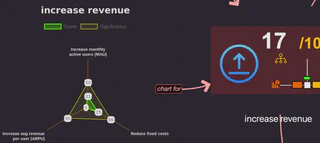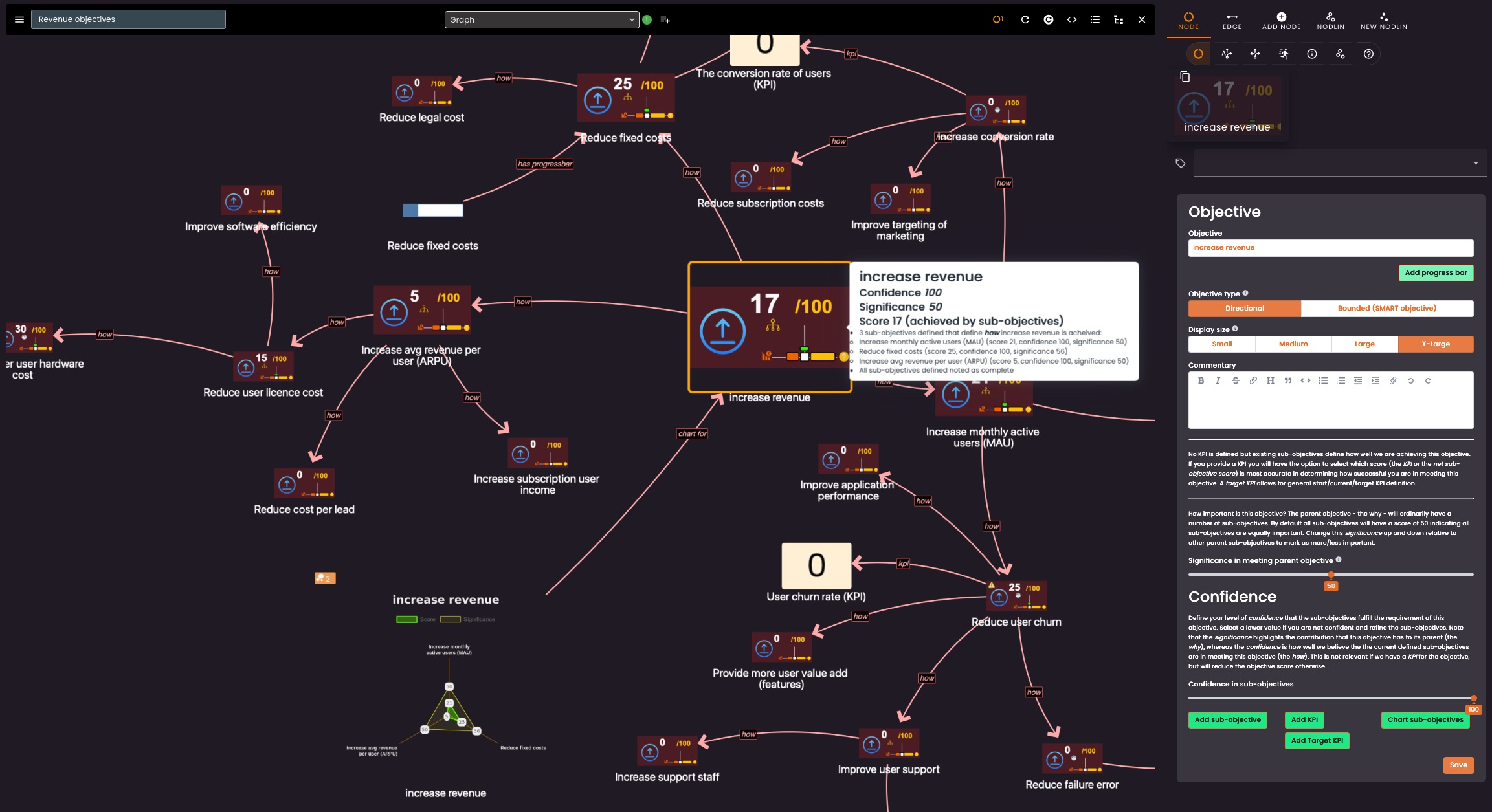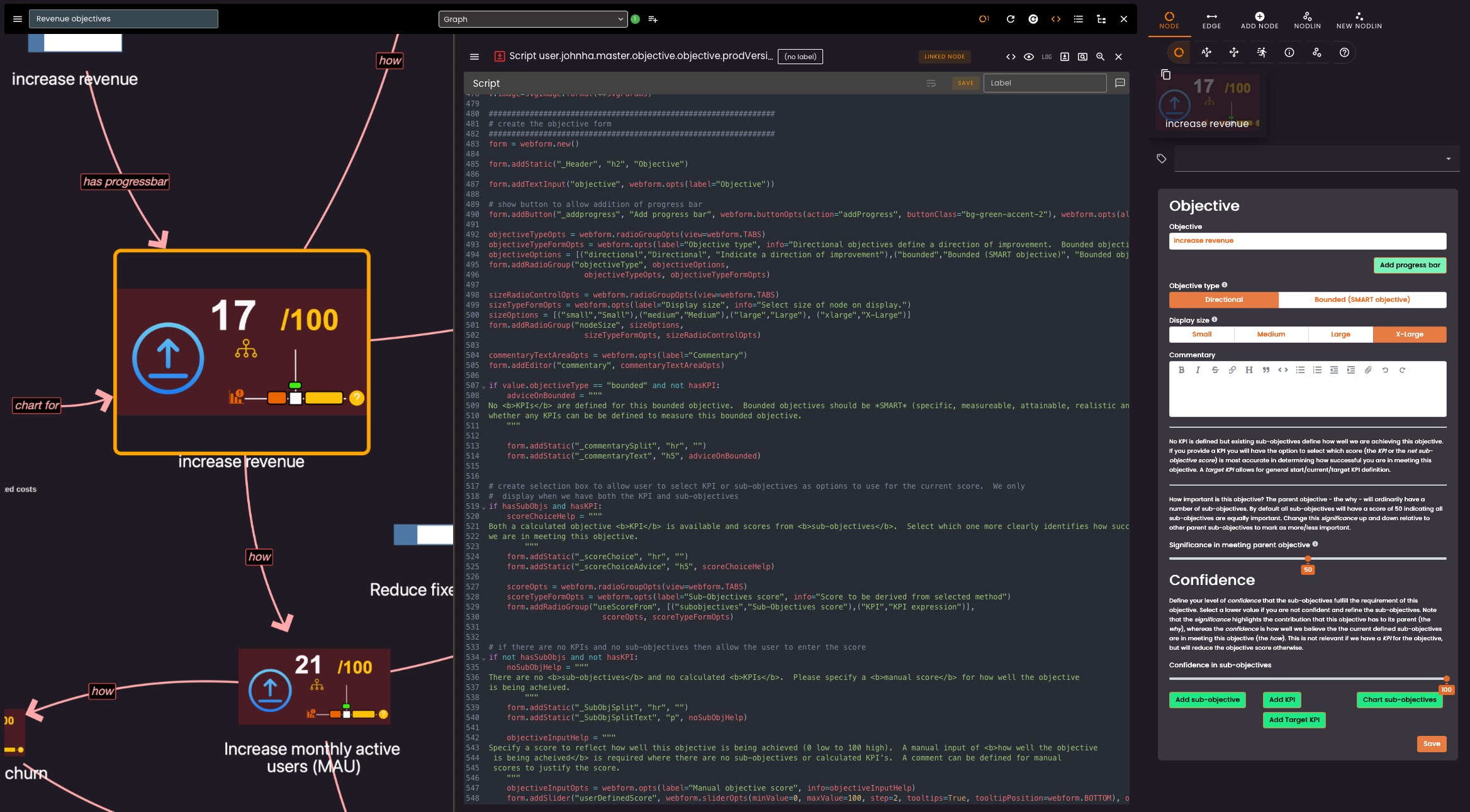Map business objectives
 Image credit: [Unsplash]
Image credit: [Unsplash]Objective mapping is a structured way to break down goals into smaller, connected parts using a “Why–How” model:
- Objective: A defined goal or outcome.
- Parent (Why): Explains the reason this objective exists — the higher-level purpose it contributes to.
- Children (How): The means by which this objective will be achieved — the concrete sub-objectives or actions.
The result is a hierarchical map: each objective links upward to its purpose (why) and downward to its implementation steps (how). This creates clarity, aligns actions with strategy, and makes dependencies explicit.
Consultancies use this approach to map business objectives, but brand them under many names:
- Logic Tree, Issue Tree, or MECE Framework (mutually exclusive, collectively exhaustive) (McKinsey)
- Strategy Map or Value Driver Tree (BCG)
- Results Delivery Map or Objective Cascade (Bain)
- Balanced Scorecard – Strategy Map (top-level objectives linked down to initiatives and measures) (Kaplan & Norton)
- OKRs – a flatter variant of the same hierarchy (popularised by Google)
In this example nodlin script we have added quantitative KPI’s to form the objective map. This aligns with concepts in utility theory to allow us to measure progress in meeting business objectives.
OKRs (objectives and key results) are a simplified form of this approach, but not as rich in providing the full chain of thought (they are a one-layer structure).
Highlights the key cross-domain benefits of nodlin
Objective hierarchies are a powerful way to aid in organising business objectives and tracking progress. Business leaders in nodlin can collaborativelly define and manage these hierarchies.
In the following example you can see an objective to increase revenue. This has been broken down into multiple sub-objectives.
We show a KPI - the User churn rate that can be derived from detail in other nodlins. This KPI is related to the objective Reduce User Churn, (why?) -> to Increase monthly active users, (why?) -> to Increase revenue.
Through these connections, you can create a rich hierarchical view of your business objectives and have a near real-time view of how you are progressing.
The objective hierarchy (if permissioned) can be viewed by anyone in the organisation. This is a powerful way to provide transparency and visibility to everyone across the organisation to ensure that everyone is aligned.
Upgrade and customise the script
There are only 2 scripts in this package, the objective and the KPI. You can upgrade and customise this script to suit your needs.
This is a more comprehensive script example, that creates a chart like image for the node, a form, performs the logic to calculate the objective score, and allows related nodes (e.g. KPIs) to be linked to the objective.
Note that you only have to create the script once, and then share across the organisation to establish as practice.

